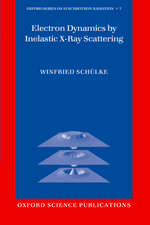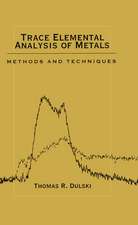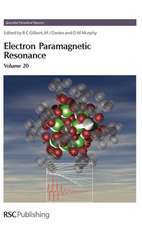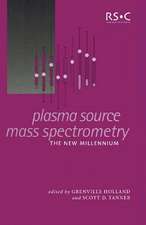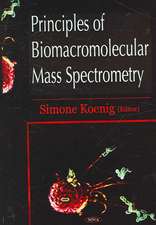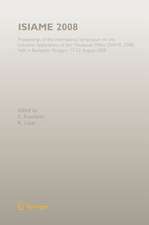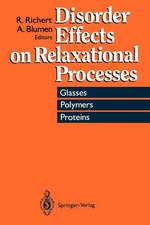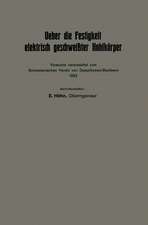Nonlinear Dielectric Spectroscopy: Advances in Dielectrics
Editat de Ranko Richerten Limba Engleză Paperback – 14 dec 2018
The book explains that nonlinear dielectric spectroscopy can be used as a tool to measure structural recovery or physical aging, as well as connections between dynamics and thermodynamic variables such as enthalpy and entropy. Supercooled liquids in their viscous regime are ideal candidates for investigating nonlinear effects, because they are particularly sensitive to changes in temperature, and thus also to changes in the electric field. Other interesting materials covered are plastic crystals and complex liquids near criticality. The book also points out that, compared with other techniques such as mechanical shear experiments, the nonlinear regime of dielectric spectroscopy is special in the sense that the energies involved always remain small compared with thermal energies. To demonstrate this, nonlinear features of mechanical experiments are discussed. Theoretical approaches to nonlinear effects are particularly complicated because the tools available for the linear regime no longer apply. As a result, there is no single generally accepted theory to nonlinear dielectric responses of real liquids. Various approaches to nonlinear dielectric features have been reported, and the different aspects are communicated in several chapters. The book communicates recent progress most effectively through individual contributions from specialists in their respective fields.Chapter 'Third and Fifth Harmonic Responses in Viscous Liquids' is available open access under a Creative Commons Attribution 4.0 International License via link.springer.com.
| Toate formatele și edițiile | Preț | Express |
|---|---|---|
| Paperback (1) | 690.15 lei 38-44 zile | |
| Springer International Publishing – 14 dec 2018 | 690.15 lei 38-44 zile | |
| Hardback (1) | 791.25 lei 6-8 săpt. | |
| Springer International Publishing – 29 iun 2018 | 791.25 lei 6-8 săpt. |
Preț: 690.15 lei
Preț vechi: 908.09 lei
-24% Nou
Puncte Express: 1035
Preț estimativ în valută:
132.09€ • 136.13$ • 111.52£
132.09€ • 136.13$ • 111.52£
Carte tipărită la comandă
Livrare economică 25 februarie-03 martie
Preluare comenzi: 021 569.72.76
Specificații
ISBN-13: 9783030084844
ISBN-10: 3030084841
Pagini: 372
Ilustrații: VIII, 372 p.
Dimensiuni: 155 x 235 mm
Ediția:Softcover reprint of the original 1st ed. 2018
Editura: Springer International Publishing
Colecția Springer
Seria Advances in Dielectrics
Locul publicării:Cham, Switzerland
ISBN-10: 3030084841
Pagini: 372
Ilustrații: VIII, 372 p.
Dimensiuni: 155 x 235 mm
Ediția:Softcover reprint of the original 1st ed. 2018
Editura: Springer International Publishing
Colecția Springer
Seria Advances in Dielectrics
Locul publicării:Cham, Switzerland
Cuprins
Introduction.- Experiment.- Theory/Modeling.
Textul de pe ultima copertă
This book introduces the ideas and concepts of nonlinear dielectric spectroscopy, outlines its history, and provides insight into the present state of the art of the experimental technology and understanding of nonlinear dielectric effects. Emphasis is on what can be learned from nonlinear experiments that could not be derived from the linear counterparts.
The book explains that nonlinear dielectric spectroscopy can be used as a tool to measure structural recovery or physical aging, as well as connections between dynamics and thermodynamic variables such as enthalpy and entropy. Supercooled liquids in their viscous regime are ideal candidates for investigating nonlinear effects, because they are particularly sensitive to changes in temperature, and thus also to changes in the electric field. Other interesting materials covered are plastic crystals and complex liquids near criticality. The book also points out that, compared with other techniques such as mechanical shear experiments, the nonlinear regime of dielectric spectroscopy is special in the sense that the energies involved always remain small compared with thermal energies. To demonstrate this, nonlinear features of mechanical experiments are discussed. Theoretical approaches to nonlinear effects are particularly complicated because the tools available for the linear regime no longer apply. As a result, there is no single generally accepted theory to nonlinear dielectric responses of real liquids. Various approaches to nonlinear dielectric features have been reported, and the different aspects are communicated in several chapters. The book communicates recent progress most effectively through individual contributions from specialists in their respective fields.
Chapter 'Third and Fifth Harmonic Responses in Viscous Liquids' is available open access under a Creative Commons Attribution 4.0 International License via link.springer.com.
The book explains that nonlinear dielectric spectroscopy can be used as a tool to measure structural recovery or physical aging, as well as connections between dynamics and thermodynamic variables such as enthalpy and entropy. Supercooled liquids in their viscous regime are ideal candidates for investigating nonlinear effects, because they are particularly sensitive to changes in temperature, and thus also to changes in the electric field. Other interesting materials covered are plastic crystals and complex liquids near criticality. The book also points out that, compared with other techniques such as mechanical shear experiments, the nonlinear regime of dielectric spectroscopy is special in the sense that the energies involved always remain small compared with thermal energies. To demonstrate this, nonlinear features of mechanical experiments are discussed. Theoretical approaches to nonlinear effects are particularly complicated because the tools available for the linear regime no longer apply. As a result, there is no single generally accepted theory to nonlinear dielectric responses of real liquids. Various approaches to nonlinear dielectric features have been reported, and the different aspects are communicated in several chapters. The book communicates recent progress most effectively through individual contributions from specialists in their respective fields.
Chapter 'Third and Fifth Harmonic Responses in Viscous Liquids' is available open access under a Creative Commons Attribution 4.0 International License via link.springer.com.
Caracteristici
Introduces the ideas and concepts of nonlinear dielectric spectroscopy Provides insight into the experimental technologies Discusses various approaches to nonlinear dielectric features in individual chapters by specialists in their respective fields








